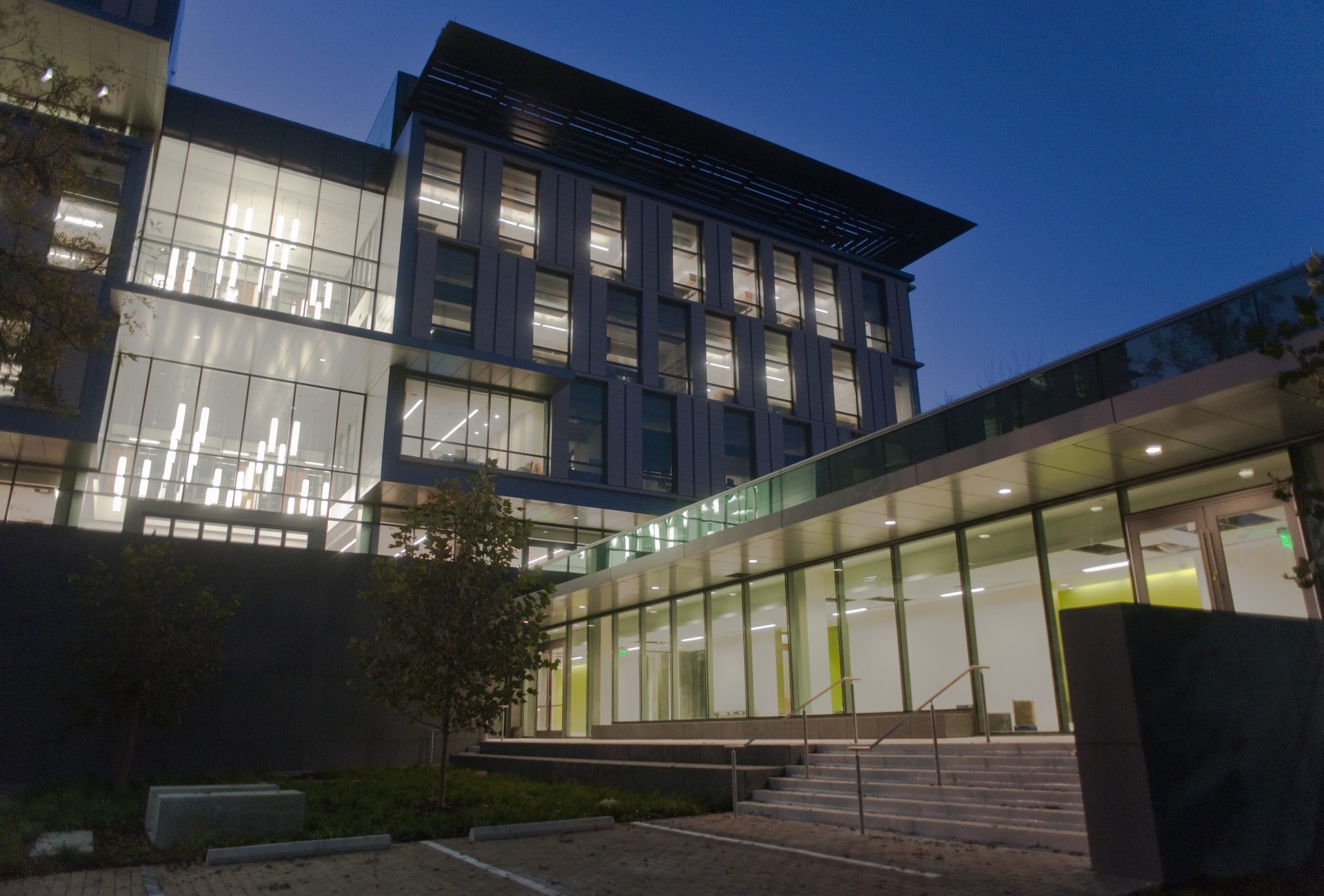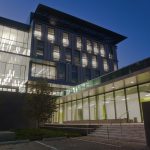Just in time for the spring semester, the new College of Liberal Arts Building will make its debut. The 200,000 square-foot, glass and limestone structure will give more than 10,000 liberal arts students a place to call home for the first time in decades.
Not only is the building the newest landmark for the campus, it is also a model for innovative funding and cost-effective planning and design. The building was self-funded by the college – a first at UT – which means it was built without tapping legislative or UT System funding. Although final calculations are still pending, the total cost is projected to be $87 million, less than the project’s initial expected cost of $100 million. More about financing.
“Many new buildings today are described as innovative, but this building truly stands out as a model for cost-effective planning and design in the 21st century,” says Randy Diehl, dean of the College of Liberal Arts. “This space will be vital in our ongoing efforts to attract and recruit the highest-quality faculty and students.”
The building’s many features include:
SMART CLASSROOMS – ZERO FLOOR
 Designed for large and introductory courses, these smart classrooms offer the next generation of instructional technology and are among the best general-purpose classrooms on campus. With the press of a button, the system lowers window shades and display screens for instructional presentations. Liberal Arts Instructional Technology Services installed these smart classrooms with special attention to acoustics, sightlines, writing surfaces, seating and lighting.
Designed for large and introductory courses, these smart classrooms offer the next generation of instructional technology and are among the best general-purpose classrooms on campus. With the press of a button, the system lowers window shades and display screens for instructional presentations. Liberal Arts Instructional Technology Services installed these smart classrooms with special attention to acoustics, sightlines, writing surfaces, seating and lighting.
A central help desk remotely monitors and controls any room in the building. With more than nine miles of cabling, this centralized system is readily adaptable to technological upgrades, which will save the college both time and money.
Upgrades to the system could include components for videoconferencing and the delivery of lectures to multiple rooms.
JULIUS GLICKMAN CONFERENCE CENTER – 1st FLOOR
For the first time, the College of Liberal Arts will have its own conference center for symposiums, distinguished lectures and special events. The Julius Glickman Conference Center consists of six rooms-two with an occupancy of 100 guests; two designed for up to 40 guests; and two for small gatherings up to 18 guests.
The conference center also features a full audio/visual presentation system and a staging area for caterers. The south-facing doors open onto a patio overlooking the Ellen Clarke Temple East Garden and the Frances Brannen Vick West Garden. The conference center’s large windows also offer beautiful views of these lush gardens. Go to this website for more information.
DIES STUDENT CENTER-1ST FLOOR
Liberal Arts undergraduates finally have a home of their own in this spacious lounge that opens onto the east deck and offers views of the Waller Creek Greenbelt. Open only to liberal arts students, the space includes the Wagner Student Workroom, the Dick and Judy Perkins Study Niche, and the Peyton and Carolyn Townsend Study Niche.
ALEXANDRA BESING LIBERAL ARTS HONORS SUITE AND THE LOW- ELL LEBERMANN, JR. PLAN II HONORS SUITE-2ND FLOOR
 Two of the university’s most distinguished honors programs-Liberal Arts Honors and Plan II-are now located side by side in suites above the main entrance that overlook the East Mall. Each suite includes a common room, computer lab and administrative area.
Two of the university’s most distinguished honors programs-Liberal Arts Honors and Plan II-are now located side by side in suites above the main entrance that overlook the East Mall. Each suite includes a common room, computer lab and administrative area.
POPULATION RESEARCH CENTER COLLABORATIVE FACULTY SPACES-2ND FLOOR
Collaborative faculty spaces in the Population Research Center are specifically designed to facilitate interaction and collaboration among team members. Faculty and post-doctorate researchers in similar research fields are joined together in these common spaces that feature shared worktables and audio/visual systems.
STUDENT ACTIVITY CENTER SKYBRIDGE, WITH 3RD AND 4TH FLOOR CONNECTING LOUNGES
Located on the fourth floor, the Skybridge connects the College of Liberal Arts Building with the Department of Anthropology, located on the top floors of the Student Activity Center, which opened in 2011.
The College of Liberal Arts Building was envisioned to encourage collaboration among the social sciences on both sides of the Skybridge. The fourth-floor lounge, located directly in front of the Skybridge, and the third-floor lounge below feature floor-to-ceiling glass walls that define this open, collaborative space.
LINGUISTICS LAB SPACE – 4TH FLOOR
Designed for the specialized needs of researchers in the Department of Linguistics, the lab facilitates collection and analysis of audio/visual materials and directly engages students in departmental research. The space includes a computational linguistics research and teaching lab, sign language research and teaching labs with an observation booth and a control room, a documentary linguistics seminar space and workroom, and a syntax and semantics computer lab.
JAMES J. MULVA ROTC CENTER – 5TH FLOOR
The ROTC suite highlights the four branches of the military: Army, Navy, Air Force and Marine Corps. With an observation deck that overlooks the Waller Creek Greenbelt, the shared heritage lounge features a donor board and brief historical narratives of the four military branches. The center also features alcoves in the public area dedicated to each branch and a Missing in Action (MIA) and Prisoner of War (POW) brick wall-salvaged from Russell A. Steindam Hall-with signatures from POWs.
Composed of 24 academic departments, two dozen centers and 600-plus faculty members, the college has been spread across 30 buildings. This is the first time the college will have a home of its own since Old Main was torn down in the 1930s. The departments, programs and centers housed in the new building include: Liberal Arts Honors, Native American and Indigenous Studies, Population Research Center, Plan II Honors, Schusterman Center for Jewish Studies, Geography and the Environment, Sociology, Linguistics, Military Science, Naval Science and Air Force Science.

